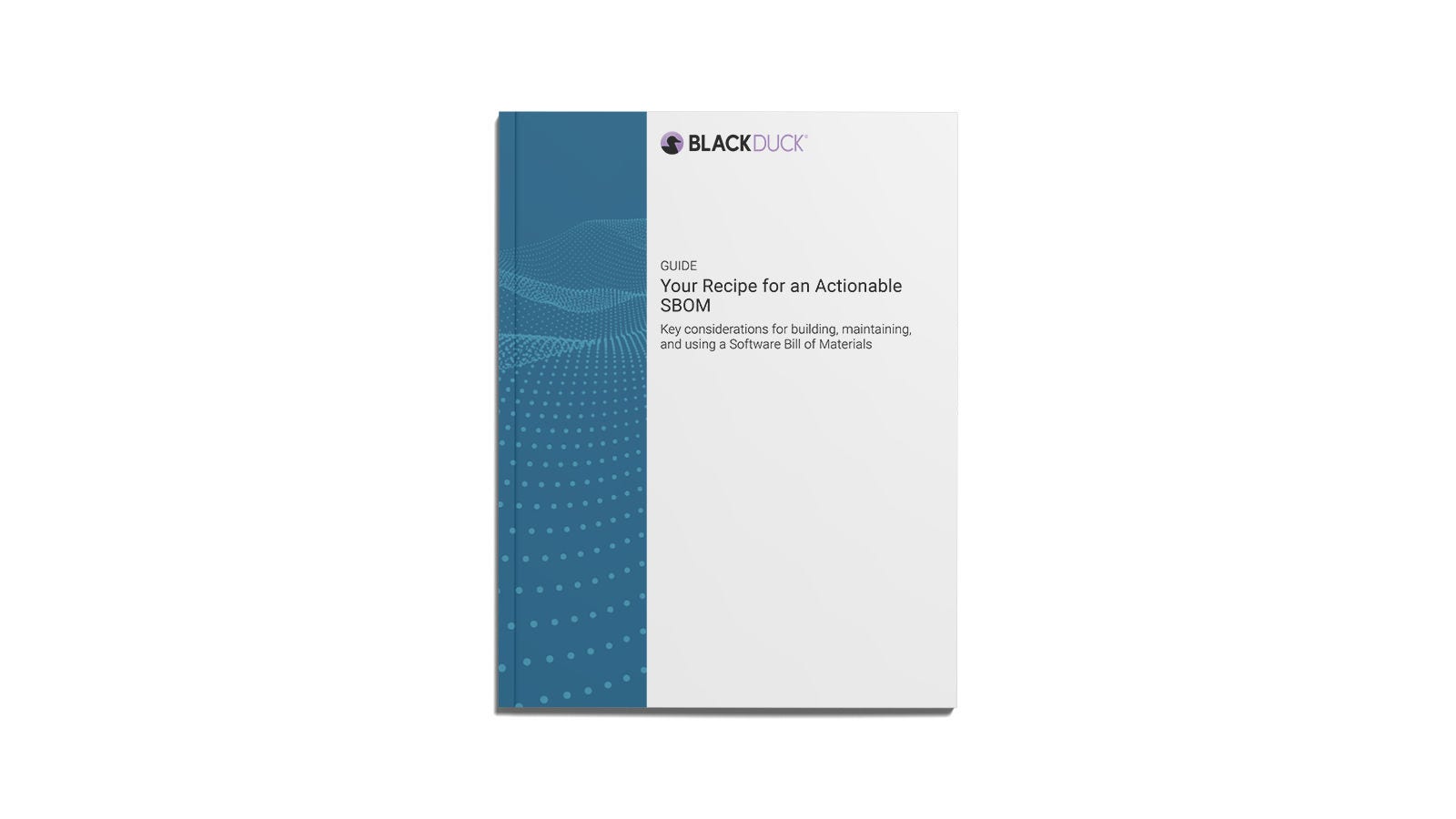Your Recipe for an Actionable SBOM
Software is constantly changing. New dependencies. Updates. Patches. Without a complete, dynamic view of what's in your applications, you can't know what risks you're exposed to.
A Software Bill of Materials (SBOM) provides that view. Think of it as your "list of ingredients" for all open source, proprietary, and commercial code, along with associated licenses, versions, and patch statuses.
But how do you create an SBOM? What should you include? And what do you do once you've created your SBOM?
Download our guide for answers to these questions.
Download the guide now
You'll also learn
- How to make the SBOM creation process repeatable
- Why you should adopt a standardized SBOM format
- Why a secure delivery method matters
- The importance of including industry-specific requirements
